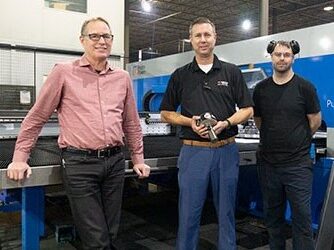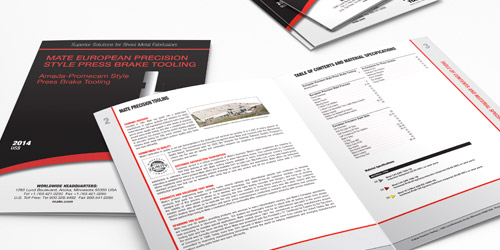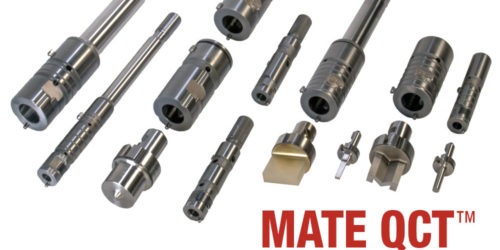Eliminate Secondary Bending Operations
Solution Bulletin
The Problem:
One of the most common sheet metal fabricating operations is bending. As fabricators look to streamline operations to reduce costs and increase efficiency, bending usually tops the list because it typically requires a secondary operation on the press brake. Yet the opportunities to rationalize bending operations have been limited. Mate offers one solution — EasyBend™ — for smaller piece parts where using a press brake seems like overkill. With VariBend™, Mate expands the possibilities of making fabrication more efficient by more effective use of the punch press.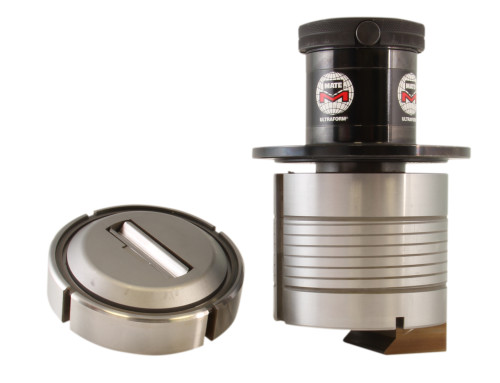
The Mate Solution:
Mate’s VariBend™ is a flexible, multi-purpose tool that allows forming of sheet metal tabs in a punch press environment, eliminating some secondary operations normally reserved for a press brake. Flexible, because it can be used for a range of material thicknesses, VariBend is also multi-purpose, because it can be used to form tabs at any angle up to (and in some cases exceeding) 90°.
How It Works:
The upper forming tool is lowered onto the sheet until bending begins. Then, the flange is over bent to account for the material springback (left illustration below). As the upper returns, the desired bend is formed (right illustration below).
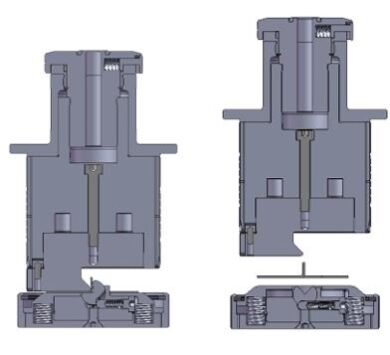 Although not required, the VariBend is well suited for machines with upforming capabilities and especially machines with stroke control. Upforming allows the highest form possible for the tool design. Since the die sits lower than a forming die in a normal forming operation, the sheet lies flatter. This increases the accuracy of the formed tab while reducing sheet marking on the bottom side of the sheet. Using VariBend in machines with stroke control assures easy setup and accuracy when forming tabs in a punch press.
Although not required, the VariBend is well suited for machines with upforming capabilities and especially machines with stroke control. Upforming allows the highest form possible for the tool design. Since the die sits lower than a forming die in a normal forming operation, the sheet lies flatter. This increases the accuracy of the formed tab while reducing sheet marking on the bottom side of the sheet. Using VariBend in machines with stroke control assures easy setup and accuracy when forming tabs in a punch press.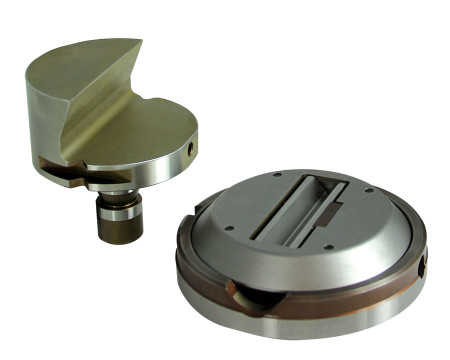
VariBend can also be used in machines without upforming capabilities or stroke control features. Formed tab height may be restricted, depending on the height of the turret gap of the user’s machine. In thick turret environments, Mate Ultraform® holders may be used for length adjustment in machines without stroke control. Formed angles can be modified by adjusting the length of the Ultraform holder with the VariBend tools installed.
Other Information:
- VariBend can be programmed as a normal forming tool (regular forming or as an upforming tool).
- To obtain bends of 90°, a punched tab must have a minimum length of 0.243” (6,17mm) from the end of the tab to the tool centerline in order for the rotating die to initiate the forming process. A shorter length tab will result in forms less than 90°.
- With VariBend, it is easy to adjust the angle of the form. Generally speaking, to change the formed angle by 1°, adjust the stroke length or tool length by 0.005” (0,13mm).
- VariBend will produce form heights of approximately 0.300”–0.700” (7,60mm –17,75mm). With caution and reduced speeds, slightly shorter forms can be achieved. The maximum height is determined by the design and height of the upper tool.
- When possible, all forms should be processed as close to the end of the program as possible to prevent damage to forms from the normal punching process.
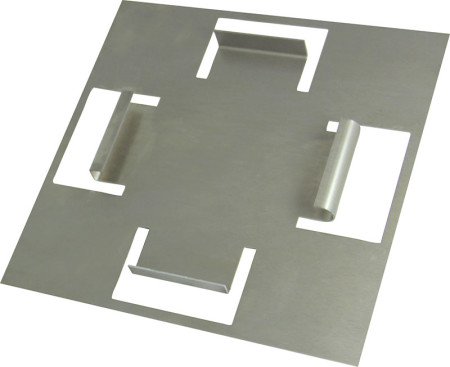
Available Tooling Styles and Station Sizes
- Thick Turret, B through E Stations
- Trumpf Style, Size 2
- Murata Wiedemann 114 Style, D through L Stations
- Thin Turret, 1¼” and 3½” Stations
- Nova, D through G Stations
Material and Other Restrictions:
- Minimum material thickness: 0.020” (0,51mm)
- Maximum material thickness:
Mild Steel: 0.098” (2,49mm)
Aluminum: 0.098” (2,49mm)
Stainless: 0.079” (2,01mm)
Tonnage Restrictions:
None known
